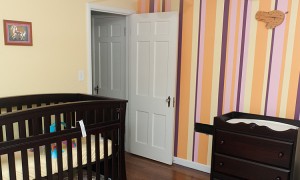As one of the initial home elements that your visitors will see, walkway designs often lead the charge in first impressions. To create a lasting imprint of beauty and utility, consider the following advice when deciding on how to create the perfect walkway.
Walkway Widths
Plan the width of your walkway accordingly. If you anticipate frequent comings and goings, reserve at least four-feet in width to provide sufficient walking room. If it’s merely decorative, then opt for a narrower design. Consider using width to highlight specific areas in your landscape. Try wider berths at the doorway or provide landings at gardens, benches, or other points of interest.
A Stone’s Throw Away to a Perfect Walkway
As one of the oldest and most popular walkway design materials, stone has earned its reputation for being accessible and low maintenance. Generally, incorporating stone into a walkway can give a home a natural air. Stepping stone walkways can support a home’s water theme and conjure up images of lilies on a pond. Brick walkways blend seamlessly against houses made from the same material. Additionally, colored bricks can provide a way to experiment with geometric patterns and line designs.
To add extra texture or depth to your walkway, place gravel, rocks, or caliche around the path. These types of stones can provide a quick fix when there’s a lack of beautifying grass or greenery on the property. Patterned versions of stones leap out to visitors and stand out among neighboring homes.
Wood
If rustic walkway designs appeal to you, reclaim old wood materials to connect a sidewalk to your home. Lay planks of wood to evoke a bridge motif. Locally sourced cedar and cypress woods are instantly recognizable and tip your hat towards the North Texas region.
Other wood choices can call back to your surroundings or your home’s architectural style. Mulch can be a superb choice to use as an accent, if you live near a forested area, have a home in a lush neighborhood, or tend to a garden that thrives on it. Similarly, bamboo walkways are natural choices for homes that boast a bit of Asian flair.
Greenery
Boost the colors of your walkway by planting flowers, vines, and other greenery around it or have them hang from a pergola. Adjacent shrubs can provide a nice buffer between visitors and your yard. To incorporate greenery into walkway designs even more naturally, plant fragrant small plants like thyme or rosemary in between stepping stones and allow their aromatic goodness to greet visitors as they find their way to your door.
Get Edgy
Playing with your walkway’s edges can add a much-needed pop of personality, especially if your walkway isn’t a long, unique, and winding private road. Homeowners with green thumbs may consider incorporating greenery into edges, while others with more modern homes can use metal or even plastic materials to create a clean, sophisticated look without much fuss. Accent edges with materials and colors that contrast with the main walkway area to add more complexity to your design.
More for Less
As a final tip, find ways to make your walkway match the caliber of your home, even if you have to do some creative budget-stretching. Create an air of sophistication and highlight your good taste by using your highest quality materials sparingly and smartly. If you strategically position these materials in visible areas, use them as accents or as part of your walkway’s edging, they can effortlessly guide visitors’ eyes towards the real star of the show: your home.
[cf]skyword_tracking_tag[/cf]






